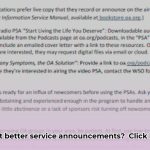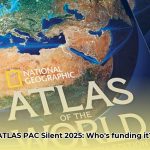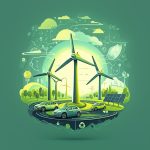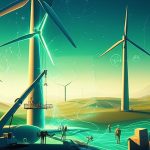Imagine a vibrant flyer landing in someone’s hands, instantly conveying the power and promise of a cleaner future, powered by the wind. A well-designed wind energy flyer can be a potent tool for raising awareness, promoting events, or even attracting investment in renewable energy projects. But how do you create one that truly captures attention and inspires action? This guide will walk you through the key elements of crafting an effective wind energy flyer, from design principles to content strategy.
At a glance:
- Define your audience: Who are you trying to reach with this flyer?
- Craft a compelling message: What key information do you want to convey?
- Choose a visually appealing design: Use images and graphics that resonate with your message.
- Include a clear call to action: What do you want people to do after reading the flyer?
- Distribute strategically: Get your flyer into the hands of the right people.
Why a Wind Energy Flyer Matters in a Greener World
In today’s world, the need for sustainable energy solutions has never been more critical. Wind energy, with its abundance and minimal environmental impact, is a crucial part of the solution. But simply knowing about wind energy isn’t enough. People need to understand its benefits and be inspired to support its growth. A well-designed wind energy flyer can bridge that gap, effectively communicating the value of wind power and motivating action.
Think of your flyer as a mini-campaign. It’s a tangible representation of your commitment to a greener future. Whether you’re promoting a local wind farm project, advocating for policy changes, or simply raising awareness about the benefits of renewable energy, a compelling flyer can make a significant impact.
Laying the Groundwork: Defining Your Flyer’s Purpose and Audience
Before even thinking about design, you need to answer two fundamental questions:
- What’s the purpose of your flyer? Are you trying to:
- Raise awareness about wind energy?
- Promote a specific wind farm or project?
- Encourage people to support renewable energy policies?
- Drive attendance to a wind energy event?
- Solicit donations for a wind energy organization?
- Who is your target audience? Consider their:
- Level of knowledge about wind energy.
- Motivations and concerns.
- Demographics (age, location, income, etc.).
Knowing your purpose and audience will guide every decision you make, from the overall message to the specific visuals you use. For example, a flyer aimed at educating the general public might focus on the environmental benefits of wind energy and use simple, easy-to-understand language. On the other hand, a flyer targeting investors might highlight the financial returns of wind farm projects and use more technical language.
Crafting a Powerful Message: Content is King (and Queen)
With your purpose and audience in mind, it’s time to craft the core message of your wind energy flyer. Here are some key principles to keep in mind:
- Keep it concise: People are busy, so get to the point quickly. Use short sentences and paragraphs.
- Highlight the benefits: Focus on what wind energy can do for the reader and the planet.
- Use clear and simple language: Avoid jargon and technical terms that your audience may not understand.
- Tell a story: Connect with your audience on an emotional level by sharing a compelling story about wind energy.
- Back up your claims with facts: Use credible data and statistics to support your message.
Essential elements to consider including: - A catchy headline: Grab the reader’s attention from the start.
- A brief introduction to wind energy: Explain what it is and how it works (in simple terms).
- The benefits of wind energy: Highlight the environmental, economic, and social advantages.
- A call to action: Tell the reader what you want them to do (e.g., visit a website, attend an event, sign a petition).
- Contact information: Make it easy for people to get in touch with you.
Designing for Impact: Visual Appeal and Readability
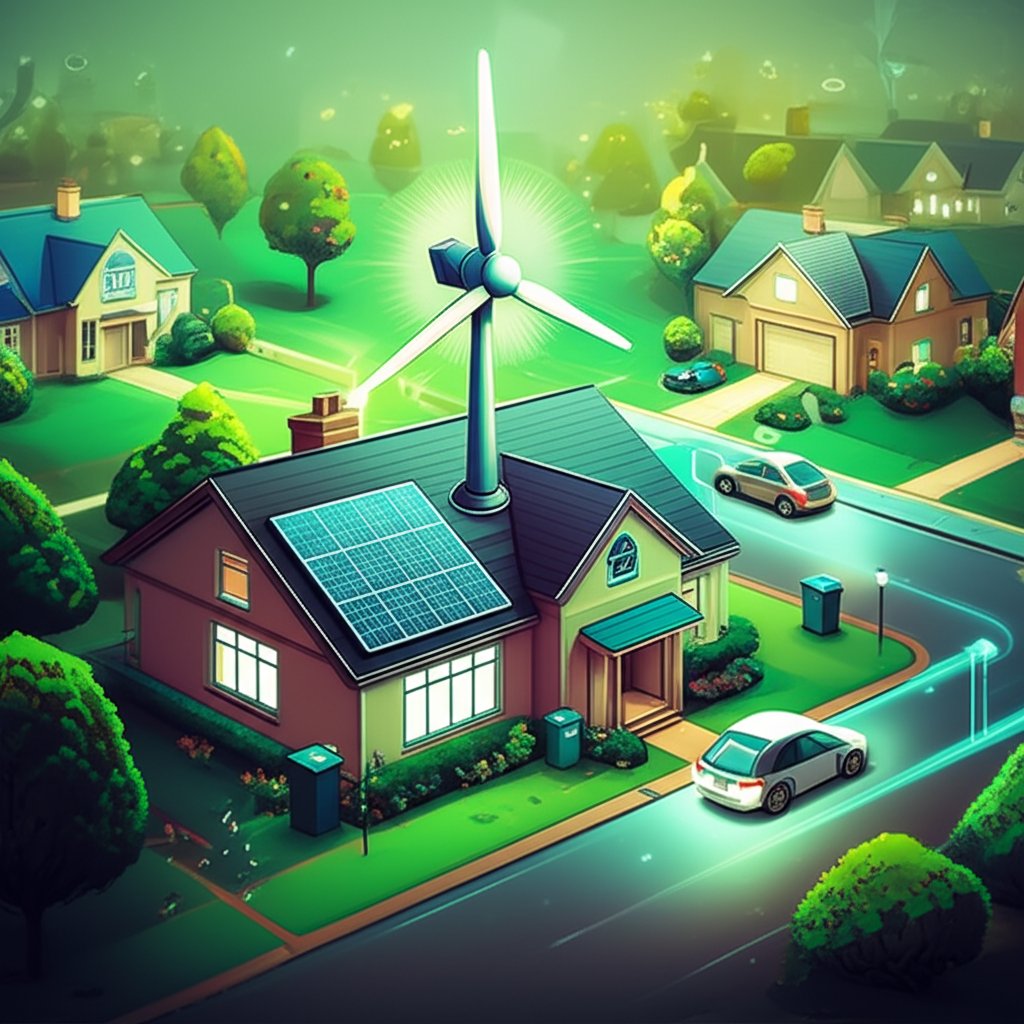
A visually appealing design is crucial for capturing attention and conveying your message effectively. Here are some key design principles to keep in mind:
- Use high-quality images: Choose images that are visually stunning and relevant to wind energy. Wind turbines silhouetted against a sunset, soaring birds near wind farms, or even happy families enjoying clean air can all be powerful visuals. Many resources offer royalty-free images; just be sure to check the license.
- Choose a clear and readable font: Select a font that is easy to read, even at small sizes. Use different font sizes and styles to create visual hierarchy and highlight important information.
- Use color strategically: Use colors that are visually appealing and consistent with your brand. Green and blue are often associated with environmental themes.
- Keep it simple: Avoid clutter and overcrowding. Leave plenty of white space to make the flyer easy to read.
- Consider your layout: Use a clear and logical layout to guide the reader through the information.
Many online tools, like Design.com, offer renewable energy flyer templates that you can customize to suit your specific needs. These templates provide a great starting point for creating a professional-looking flyer, even if you don’t have any design experience.
Examples Of Compelling Flyer Headlines and Slogans
Craft an intriguing headline to hook your audience right away:
- Headline: “Power the Future: Discover Wind Energy”
- Headline: “Clean Energy, Clean Air: The Wind Energy Advantage”
- Slogan: “Wind Energy: A Breeze of Change”
- Slogan: “Harness the Wind, Power the World”
Choosing the Right Format and Size for your Wind Energy Flyer
The format and size of your wind energy flyer will depend on how you plan to distribute it. Common options include:
- Standard flyer size (8.5 x 11 inches): A versatile option that can be easily printed and distributed.
- Half-page flyer (5.5 x 8.5 inches): A more compact option that is ideal for handing out at events.
- Rack card (4 x 9 inches): A slim, vertical format that is perfect for displaying in racks or on counters.
- Digital flyer: Optimized for online sharing and distribution.
If you’re planning to print your flyer, consider using recycled paper and soy-based inks to minimize its environmental impact.
Distribution Strategies: Getting Your Flyer into the Right Hands

A beautifully designed wind energy flyer is useless if it doesn’t reach its target audience. Here are some effective distribution strategies:
- Direct mail: Send your flyer to targeted households or businesses in your area.
- Handing out flyers at events: Distribute flyers at community events, farmers’ markets, and renewable energy conferences.
- Posting flyers in public places: Ask permission to post your flyer in community centers, libraries, coffee shops, and other high-traffic areas.
- Sharing your flyer online: Upload your flyer to your website, social media channels, and relevant online forums.
- Partnering with local organizations: Collaborate with environmental groups, community organizations, and businesses to distribute your flyer to their members and customers.
Don’t underestimate the power of word-of-mouth marketing. Encourage people to share your flyer with their friends and family.
Measuring Your Flyer’s Impact: Tracking Results and Making Adjustments
To determine whether your wind energy flyer is effective, it’s important to track your results. Depending on your goals, you can track metrics such as:
- Website traffic: How many people visit your website after seeing the flyer?
- Event attendance: How many people attend your event as a result of the flyer?
- Social media engagement: How many people like, share, and comment on your flyer on social media?
- Donations: How much money do you raise as a result of the flyer?
- Feedback: Collect feedback from people who have seen the flyer to understand their reactions and suggestions.
By tracking your results, you can identify what’s working and what’s not. Use this information to make adjustments to your flyer and distribution strategy to improve your results over time. Let’s say that you want to know more about how to Harness Wind Power at Home; your flyers could drive those inquiries.
Common Questions and Misconceptions About Wind Energy Flyers
Q: How much does it cost to create a wind energy flyer?
A: The cost can vary widely, depending on whether you design it yourself or hire a professional, the printing costs, and your distribution method. You can create a basic flyer yourself using free online tools, or pay hundreds (or even thousands) for professional design and printing.
Q: What are the biggest mistakes to avoid when designing a wind energy flyer?
A: Common mistakes include using low-quality images, using too much text, failing to define a target audience, and not including a clear call to action.
Q: How can I make my wind energy flyer more sustainable?
A: Use recycled paper, soy-based inks, and a minimalist design to reduce waste. Consider distributing your flyer digitally to minimize your environmental impact even further.
Beyond the Flyer: Integrating with Broader Campaigns
A wind energy flyer shouldn’t exist in isolation. It’s most effective when integrated into a broader marketing or awareness campaign. Consider using your flyer in conjunction with:
- Social media posts: Share your flyer on social media and use it to drive traffic to your website.
- Email marketing: Include your flyer in your email newsletters.
- Website banners: Display your flyer prominently on your website.
- Public relations: Send your flyer to local media outlets to generate coverage.
By integrating your flyer into a multi-channel campaign, you can amplify your message and reach a wider audience. You can even showcase future plans for the evolution of Wind-powered cars: a reality in your flyer.
Taking Action: Crafting Your Wind Energy Flyer Today
Creating a wind energy flyer is a powerful way to promote clean energy and inspire action. By following the tips and guidelines in this guide, you can design a flyer that is visually appealing, informative, and effective. Remember to define your purpose and audience, craft a compelling message, choose the right design, and distribute your flyer strategically.
Don’t be afraid to experiment and try new things. The most important thing is to get your message out there and start a conversation about the importance of wind energy.
Now, go forth and create a flyer that will make a difference!
- Wind Energy Flyer: Design a Powerful Green Campaign Show - November 26, 2025
- What Types Of Jobs Does Wind Energy Create? - November 23, 2025
- Residential Wind Energy: Powering Homes with Small Turbines - November 21, 2025




